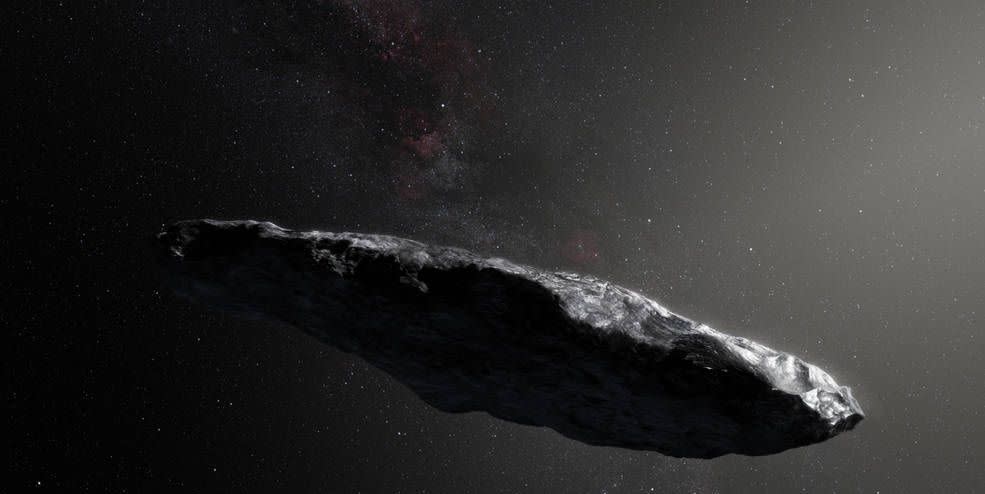It Turns Out the Interstellar Visitor 'Oumuamua Is Just a Little Guy

Spotted in 2017, the mysterious space traveler 'Oumuamua remains the first and only interstellar object we've seen passing through our solar system. There's been plenty of speculation on what 'Oumuamua (which means “a visitor from a great distance” in Hawaiian) could be, but a new study from NASA's Jet Propulsion Laboratory (JPL) has some answers.
For starters: it's pretty small. And the reason NASA knows this is because it honestly can't get a good look at 'Oumuamua.
NASA has been studying the traveler with the Spitzer Space Telescope (SST), an infrared telescope that launched in 2003. The last of NASA's four so-called Great Observatories, it's mentioned in the same breath as more famous space-based telescopes like the Hubble. And with a telescope lens 33.5 inches in diameter, it's capable of looking deep into the solar system.
However, 'Oumuamua proved to be a challenge. SST was pointed at the interstellar object for two months after its closest pass of Earth, with the object was 15 million miles away or so. All that time, 'Oumuamua was too faint for the SST to detect.
"'Oumuamua has been full of surprises from day one, so we were eager to see what Spitzer might show," says David Trilling, lead author on the new study and a professor of astronomy at Northern Arizona University, in a press statement. "The fact that 'Oumuamua was too small for Spitzer to detect is actually a very valuable result."
Spitzer's non-detection allows scientists to understand 'Oumuamua's limits. It's "spherical diameter" maxes out to a possible 1,440 feet (440 meters), 460 feet (140 meters) or perhaps as little as 320 feet (100 meters). That range comes because scientists still aren't sure exactly what 'Oumuamua is made of.
SST is revealing other new information about the interstellar visitor. It found 'Oumuamua is 10 times as reflective as any comets that exist within our solar system. When comets get close to stars, their icy interiors melt into a gas. That gas then helps wipe away the outer layers of dust and debris collected along the journey.

Because 'Oumuamua has been on an interstellar journey between star systems, its outer could have built up to the extent that a tremendous amount of gas could have been unleashed as it got close to the sun. As the rock flew through space away from the sun, that released gas would freeze again, turning into an extremely shiny surface.
Many mysteries about 'Oumuamua may remain unanswered. Unless it's actually an alien probe, as a Harvard scientist recently suggested, the object is leaving our solar system and isn't coming back. It's already too far away for any space-based telescope to detect.
"Usually, if we get a measurement from a comet that's kind of weird, we go back and measure it again until we understand what we're seeing," said Davide Farnocchia. of the Center for Near Earth Object Studies (CNEOS) at JPL. "But this one is gone forever. We probably know as much about it as we're ever going to know."
Source: NASA
('You Might Also Like',)

